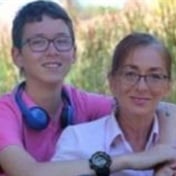Other scientists who reviewed the study hailed it as a breakthrough in fundamental cancer biology, but cautioned that much work remained before the exploit could be translated into next-generation therapies.
An ideal target for chemoThe enzyme, called telomerase, "is an ideal target for chemotherapy because it is active in almost all human cancer tumours, but inactive in most normal cells," said Emmanuel Skordalakes, a professor at the Wistar Institute in Philadelphia who led the study.
"That means that a drug that deactivates telomerase would likely work against all cancers, with few side effects." In humans, telomerase adds short sequences of DNA known as telomeres to the ends of chromosomes, thus preventing damage and the loss of genetic information when cells divide.
The enzyme is active mainly in cells that multiply frequently, such as embryonic stem cells, but is switched off in normal adult cells to avoid problems caused by runaway cell proliferation.
In cancer cells, however, telomerase is activated, allowing the disease cells to replicate endlessly and achieve what scientists call "cellular immortality," the hallmark of all cancers.
A decade-long search for telomerase inhibitors has, up to now, been
hampered by a lack of knowledge of how the enzyme is structured.
First complete view
Skordalakes and colleagues are the first to provide a complete view
of a critically important protein within the telomerase molecule.
It reveals, at an atomic level, how the enzyme replicates the tips of chromosomes, a process critical to the development of tumours.
The breakdown of this same mechanism is also involved in the ageing process, which means any new inhibitor drugs might also help boost longevity.
Main obstacle overcome
The main obstacle blocking research on the complicated architecture
of telomerase was simply gathering a sufficient quantity of the enzyme.
Neither humans nor yeast - the standard laboratory sources - yielded enough.
Skordalakes screened a wide range of organisms, including protozoa and insects, before discovering that the red flour beetle produced copious amounts of telomerase in a stable form.
"This was really the breakthrough," he said. "Once we found that the gene from this organism expressed the protein in the quantities we needed, we were able to move quickly." The researchers used a technique called X-ray crystallography that analyses the patterns of X-rays beamed at molecule crystals to create a three-dimensional structure of the enzyme's active region.
Knowing how this region - called the telomerase reverse transcriptase protein (TERT) - is structured made it possible to decipher how the enzyme works.
"For the first time, we can see how telomerase assembles at the end of chromosomes in initiate telomere replication," said Skordalakes.
Several scientists who reviewed the study ahead of publication hailed its significance.
Only one of many steps
They added, though, that it was only one in a series of essential
steps that led to any novel treatment for cancer.
"There is no doubt that having determined the structure of telomerase is extremely important in understanding cancer biology, and will probably help lead us in the development of telomerase inhibitors," Herbie Newell, head of Translational Research at Cancer Research UK, told AFP.
"But whether these inhibitors will ultimately represent an effective class of anti-cancer treatments, it is too early to say."
Jon Wilson, a scientist at The Institute of Cancer Research in London described the research as a "major breakthrough" in the study of telomeres in the cancer process.
But he, too, cautioned that the development of drugs to deactivate the enzyme "in a therapeutic setting, although an exciting prospect, will require a great deal more research." – (Sapa-AFP)
Read more:
Cancer Centre
September 2008




 Publications
Publications
 Partners
Partners














